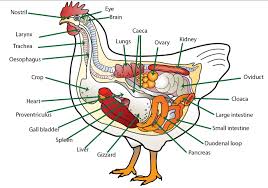Digestive system is a series of connected organs whose purpose is to break down, or digest, the food we eat. Food is made up of large, complex molecules, which the digestive system breaks down into smaller, simple molecules that can be absorbed into the bloodstream. The simple molecules travel through the bloodstream to all of the body'cells, which use them for growth, repair, and energy.
 All animals have a digestive system, a feature that distinguishes them from plants. Plants produce their own food in a process called photosynthesis, during which they use sunlight to convert water and carbon dioxide into simple sugars. But animals, including humans, must take in food in the form of organic matter, such as plants or other animals.Digestive generally involves two phases: a mechanical phase and a chemical phase. In the mechanical phase, teeth or other structures physically break down large pieces of food into smaller pieces. In the chemical phase, digestive chemicals called enzymes break apart individual molecules of food to yield molecules that can be absorbed and distributed throughout the body. These enzymes are secreted (produced and released) by glands in the body.
All animals have a digestive system, a feature that distinguishes them from plants. Plants produce their own food in a process called photosynthesis, during which they use sunlight to convert water and carbon dioxide into simple sugars. But animals, including humans, must take in food in the form of organic matter, such as plants or other animals.Digestive generally involves two phases: a mechanical phase and a chemical phase. In the mechanical phase, teeth or other structures physically break down large pieces of food into smaller pieces. In the chemical phase, digestive chemicals called enzymes break apart individual molecules of food to yield molecules that can be absorbed and distributed throughout the body. These enzymes are secreted (produced and released) by glands in the body.
 The digestive system of most animals consists mainly of a long, continuous tube called the alimentary canal, or digestive tract. This canal has a mouth at one end, through which food is taken in, and an anus at the other end, through which digestive wastes are excreted. Muscles in the walls of the alimentary canal. However, two accessory digestive organs, the liver and pancreas, are located outside the alimentary canal. These organs contribute to chemical digestion by releasing digestive juices into the canal through tubes called ducts.
The digestive system of most animals consists mainly of a long, continuous tube called the alimentary canal, or digestive tract. This canal has a mouth at one end, through which food is taken in, and an anus at the other end, through which digestive wastes are excreted. Muscles in the walls of the alimentary canal. However, two accessory digestive organs, the liver and pancreas, are located outside the alimentary canal. These organs contribute to chemical digestion by releasing digestive juices into the canal through tubes called ducts.






Keep up to date with enhancements, releases and other news. The Knowledge of science gives REAL FACTS campaign was designed to help us get a clearer picture value of Knowledge and Web of Science, and distinguish fact from fiction when it comes to the research resources available to you.
ReplyDelete